Best Practices for Effective Strategy Execution
Effective strategy execution is crucial for success, as even the most well-crafted strategies can fail if not properly implemented.
Effective strategy execution is crucial for success, as even the most well-crafted strategies can fail if not properly implemented.
Five-year strategic plans in home care often encounter several challenges due to the dynamic nature of the industry.
Adaptive leadership is not a fixed set of rules or practices; rather, it's a mindset and a skill set that empowers leaders to thrive in turbulent times.
Fostering effective team-based care improves both the patient’s and the team’s experience of care delivery. In this article, we discuss the two different approaches to team-based care, the five core principles, and how to reduce clinician burnout.
July/August 2024 Issue
FREE CONTENT In this issue of The Remington Report, we cover many aspects of social determinants of health. Get valuable insights, trends, and tools your organization can utilize to build referral partners, support patients and their families, and improve outcomes.
July/August 2024 Issue
SUBSCRIBER CONTENT Hospitals are using required screening tools to identify the risk factors of social determinants. Results will expand referral relationships to improve meaningful collaboration between healthcare providers and community-based organizations. Get to know the key reasons this is important to your organization.
July/August 2024 Issue
SUBSCRIBER CONTENT Obtain Z codes prior to a patient's discharge to gather crucial information that can assist your organization in identifying non-medical conditions and social and economic factors. We will guide you on how to locate them.
May/June 2024 Issue
FREE CONTENT The home care industry lies at the center of chronic care management. It holds the key to reducing the overall cost of care, minimizing readmissions, emergency department visits, and offering value propositions that align with partnerships involving hospitals, health systems, ACOs, payers, and Medicare Advantage Plans.
May/June 2024 Issue
SUBSCRIBER CONTENT Are you aware that both Medicare and Medicare Advantage beneficiaries are eligible for the Chronic Care Management program? It presents a remarkable opportunity to offer comprehensive care to those grappling with multiple chronic conditions. However, despite the widespread prevalence of chronic illnesses among Medicare beneficiaries, only a fraction is using the program. Which physicians are leveraging the program most frequently? What are the challenges?
May/June 2024 Issue
SUBSCRIBER CONTENT In 2024, approximately 2.4 million individuals with Alzheimer’s dementia are aged 85 or above. Research indicates that patients who receive home health services following hospital discharge have a higher chance of staying in their community for at least 30 days post-discharge, with more significant advantages observed with extended durations of home health care.
Readmission after skilled-nursing facility (SNF) discharge following heart failure hospitalization is highest during the first two days home.
The emergency department (ED) is the hospital's front door, providing over 70% of all hospital admissions. How can home-based care providers partner with EDs?
March/April 2024 Issue
FREE CONTENT The surge in collaborations between home care providers and referral sources is creating fresh avenues for growth and fostering opportunities for deeper relationship-building. Fostering relationships involves cultivating meaningful connections and collaboration. The increase in referral partnerships between home care and referral partners can be attributed to seven key factors.
March/April 2024 Issue
SUBSCRIBER CONTENT ACO MarketScan: What makes it crucial for home care providers to establish connections with ACOs? With more than half of Medicare beneficiaries enrolled in accountable care organizations, aiming for 100%, home care providers must craft compelling value propositions and engagement strategies to foster partnerships.
March/April 2024 Issue
SUBSCRIBER CONTENT Hospital MarketScan: A thorough grasp of hospital quality and outcomes proves highly advantageous for home care providers. Establishing and fortifying referral partnerships with hospitals and health systems necessitates a more comprehensive understanding of hospital outcomes and quality measures to enhance relationship building efforts.
March/April 2024 Issue
SUBSCRIBER CONTENT Physician MarketScan: As CMS concentrates on integrating more specialists into value-based care, prioritizing engagement with home care providers emerges as a key strategic imperative. These engagement strategies center around areas such as readmissions, care transitions, longitudinal care, value-based payments, bundled payments, and the expansion of specialty care within a home setting.
January/February 2024 Issue
FREE CONTENT In the January/February issue of The Remington Report, we answer two critical questions. What are the most critical areas of change in 2024? How can your organization better anticipate the future, identify opportunities, and confidently grow? Our four environmental scans will get you ready for 2024.
January/February 2024 Issue
SUBSCRIBER CONTENT ENVIRONMENTAL SCAN: Payments are shifting the site of care, accelerating the growth of care at home. The movement of ortho and cardiac payments from impatient to outpatient is related to increased volumes of care in the home. We provide forecasts and the impact to home care organizations.
January/February 2024 Issue
SUBSCRIBER CONTENT ENVIRONMENTAL SCAN: Team-based and multidisciplinary teams underpin the success of value-based care models and hospitals-at-home. Cross-collaborative teams in specialty clinical programs are making their way between hospitals and home care organizations. This is the next level of clinical integration and for stakeholders to better understand home care’s value.
January/February 2024 Issue
SUBSCRIBER CONTENT ENVIRONMENTAL SCAN: Referrals are more dependent on home care as partners for financial, quality, and patient experience measures. Shifting payments are changing traditional views of managing a patient’s care journey. Each segment of healthcare will contribute to a synergistic success level. No organization can do it alone.
November/December 2023 Issue
SUBSCRIBER CONTENT It has become a national priority to understand the needs of high-need, high-cost patients. In this article, we hear the voices of patients and how to prevent ED visits and readmissions.
November/December 2023 Issue
SUBSCRIBER CONTENT Coaching interventions have been widely touted as a potential way to prevent chronic illness and to help patients better self-manage their chronic illnesses. Coaching draws from a range of strategies to tailor its response to the dynamic situation of patients and their families.
Research shows that social determinants can be more important than health care or lifestyle choices in influencing health. Numerous studies suggest that SDOH account for between 30-55% of health outcomes.
The focus on social determinants of health in 2023 is uniting payers and providers to increase their efforts to find solutions and improve outcomes. Driven by policy and payments, change is coming.
September/October 2023 Issue
FREE CONTENT In the September/October issue of The Remington Report, we capture changes occurring across the care continuum. Healthcare policy, communications, and regulations are working at un-siloing care delivery amongst providers. We are at the tip of the iceberg of better managing a patient’s entire care journey.
July/August 2023 Issue
FREE CONTENT In the July/August issue of The Remington Report, we report on the many recently announced changes that will impact Medicare, Medicaid, Medicaid Managed Care, and primary care’s future.
May/June 2023 Issue
FREE CONTENT In the May/June issue of The Remington Report, we provide a special industry report for home-based care providers to identify the gaps in care delivery.
May/June 2023 Issue
FREE CONTENT Learn the five key areas that home-based care organizations could assist in discharge planning.
March/April 2023 Issue
FREE CONTENT In the March/April issue of The Remington Report, we report on the trends, transformation, and opportunities impacting ACOs.
March/April 2023 Issue
SUBSCRIBER CONTENT The importance of key ACO trends is to better understand the plan to decrease fee-for-service and increase value-based payments. Growth through three initiatives will be the foundation to reach CMS’s goal of 100% of Medicare into an accountable care program.
March/April 2023 Issue
SUBSCRIBER CONTENT This article summarizes the major provisions of the new ACO Reach Model and the expanded role of home-based care providers.
January/February 2023 Issue
FREE CONTENT In the January/February issue of The Remington Report, we unlock the big wave of changes ahead for home-based care in 2023.
January/February 2023 Issue
SUBSCRIBER CONTENT Key studies and data can help providers reduce readmissions, improve outcomes, and increase partnerships.
January/February 2023 Issue
SUBSCRIBER CONTENT Home care is big business for payers. No better industry is more aligned with payer goals than home-based care. We address six strategies to evaluate contracting with Medicare Advantage plans.
As a home-based care provider, all referral partners have the same goal – how to reduce readmissions and the cost. It’s important to continue to hone in on data that can help your organization better understand your role in preventing readmissions and reducing the cost of care.
New information will help your organization better align clinical services to reduce the cost of the highest medical conditions and their expenditures. The data can be used in conversations with various payer sources to align your organization’s services to reduce the cost of care and readmissions.
November-December 2022 Issue
FREE CONTENT In the November/December issue of The Remington Report, we tackle topics impacting team-based care, care transitions, case studies, and workforce improvement.
November-December 2022 Issue
SUBSCRIBER CONTENT Sharp HealthCare pre-hospice program called Transitions, is designed to give elderly patients the care they want at home and keep them out of the hospital.
September/October 2022 Issue
FREE CONTENT How are the changing financial, economic, and market conditions impacting your decisions about your workforce? A major change is coming that will determine your future staffing needs.
September/October 2022 Issue
SUBSCRIBER CONTENT With all the evolving changes occurring in healthcare, you may have missed CMS’s initiatives aligning value-based arrangements across traditional Medicare programs. We discuss the eight trends to help your organization think about the impact on your labor force and referral partners.
Payers are developing care models specific to the level of need. There is not a one-size-fits-all care-management strategy. Payers tend to categorize medical conditions by risk.
July/August 2022 Issue
FREE CONTENT Payers are gaining a foothold in the care-at-home market. Five critical trends support the rapid advancement. The challenges and opportunities are discussed in this issue of The Remington Report.
July/August 2022 Issue
SUBSCRIBER CONTENT How should your organization be responding to payers expanding their position in home-based care? What key trends support this advancement? What are key strategies to partner and align with payers? In this article, we cover the key market changes, the disruption, and growth opportunities for home-based care organizations.
July/August 2022 Issue
SUBSCRIBER CONTENT Payers are deepening their care delivery models focused on the home. In the past, we may have thought of payers in traditional roles as a medical-cost manager. Today, they are acquiring home-based care organizations to control readmissions, cost, and outcomes.
July/August 2022 Issue
SUBSCRIBER CONTENT Different payers such as Medicare, Medicare Advantage, and Special Needs Plans are focusing on the highest chronic care conditions to reduce the cost of care. In this article, is the data by payer and a discussion about how organizations can support a better aligned financial and quality partnerships.
July/August 2022 Issue
SUBSCRIBER CONTENT Medicare Advantage enrollment is growing at a fast pace. The number of plans is expanding geographically, and payers will continue to invest in the Medicare Advantage market. In this article, we dig deep into the growth of Medicare Advantage by enrollment, states, and the future. The market signal is strong to put Medicare Advantage contracting as a high priority.
July/August 2022 Issue
SUBSCRIBER CONTENT Important to all payers is the value your organization brings to reducing the cost of care. Available data can gear-up your partnership value quickly. In this article, we sliced and diced data to provide an overall macro/micro picture of how to reduce the cost of care.
A recent study in the Journal of Managed Care was an eye-opener when it comes to better understanding home-based care from an ACO perspective.
May/June 2022 Issue
FREE CONTENT In this issue of the Remington Report, we take a deep dive into the post-acute transfer policy, the impact to your organization, what it means to hospitals, and how to drive greater value as a hospital partner.
May/June 2022 Issue
SUBSCRIBER CONTENT Medicare improperly paid acute-care hospitals $54.4 million for 18,647 claims subject to the Post-Acute Care Transfer policy.
March/April 2022 Issue
FREE CONTENT In its 10th annual round of penalties, Medicare is reducing its payments to 2,499 hospitals, or 47% of all facilities for readmissions.
March/April 2022 Issue
SUBSCRIBER CONTENT Researchers examined the common reasons why some hospitals have more readmissions treating a disproportionate share of patients with low incomes, poor health and other negative circumstances.
March/April 2022 Issue
FREE CONTENT A recent study examined the patterns of Medicare beneficiaries post-acute care transitions among assisted living residents and their outcomes in the first 30 and 60 days after hospital discharge.
January/February 2022 Issue
FREE CONTENT As the care-at-home industry continues to grow and expand, there are both opportunities and challenges in the future.
January/February 2022 Issue
SUBSCRIBER CONTENT CMS’s reinterpretation of “primarily health-related” benefits has led to more Medicare Advantage (MA) plans offering services.
January/February 2022 Issue
SUBSCRIBER CONTENT CMS projects that nearly 30 million people are signing up for MA in 2022. Here are seven trends to watch for.
January/February 2022 Issue
SUBSCRIBER CONTENT Z codes are a set of ICD-10-CM codes used to report social, economic, and environmental determinants known to affect health and health-related outcomes.
Launched in 2018, Huntsman at Home in Utah was one of the first programs in the United States to provide acute cancer care at home.
November-December 2021 Issue
FREE PUBLISHER'S MESSAGE In this issue of The Remington Report, we will provide actionable insights to guide your organization forward.
September/October 2021 Issue
FREE PUBLISHER'S MESSAGE In this issue of The Remington Report, we will guide your business readiness for adoption of new transformations, look at opportunity identification to create new revenue, and provide ways to achieve better outcomes.
July/August 2021 Issue
SUBSCRIBER CONTENT Four significant trends are impacting chronic care management and the future of physician groups and payers. Moving forward this can change your referral growth and the need to expand your managed care contracts.
July/August 2021 Issue
SUBSCRIBER CONTENT Payers are targeting their member populations that will benefit the most from at-home care. The center of their home health offerings is focused on high-cost patients, palliative care, diabetes, home care visits, telehealth, and at-home testing.
A new report from the GAO titled, "COVID-19 Program Flexibilities and Considerations for Their Continuation," investigates the future of telehealth
May/June 2021 Issue
Payers, health systems, Private Equity firms, and SPAC’s acquisition of care at home companies are quickly changing market dynamics, and signaling change is ahead. This is a must-read to understand trends and insights reshaping the future.
Educational materials, tools, training, and resources for integrating palliative care into ambulatory care for patients with serious life-threatening chronic illness or conditions.
March/April 2021 Issue
Expanding continuum of care services is an important strategy for future market positioning. We explore how providers, payers, and physicians are broadening services to expand partnership referrals, create innovation, and ensure sustainability.
March/April 2021 Issue
New information will help your organization better align clinical services to reduce the cost of the highest medical conditions and their expenditures. The data can be used in conversations with various payer sources to align your organization’s services to reduce the cost of care and readmissions.
On a temporary basis, CMS issued blanket Section 1135 to healthcare professionals in response to the COVID-19 public health emergency (PHE). But now the OIG wants to be sure the rules are being followed. This Remington Report special report dives into the subject of home health telehealth payments.
January/February 2021 Issue
Beginning in 2021, several value-based payment models will begin the shift from fee-for-service to value-based. Earmark this as the transformation of payment reform for care at home providers and how they will be paid in the future.
January/February 2021 Issue
New choices to receive care at home centers on patients receiving acute level care in the home. Non-traditional care at home models is expanding into a new era. The twist to non-traditional programs is to keep care at home leadership’s eyes wide open about the impact to their organizations. Waivers are changing rules, policies have changed, and the role of who can care for patients in the home is transforming models.
January/February 2021 Issue
The invisible technology boundaries expand the rules of who can offer care in the home, how they will be paid, and it creates a less restrictive policy environment to deliver care at home. The opportunity to reshape care delivery and create a more efficient and cost-effective healthcare system is achievable because of the acceleration and adoption of technology.
January/February 2021 Issue
The question for leadership is how do you want to position your organization? As an integrator? Or as an aggregator? For care at home providers, the goal is to create a post-acute continuum model as patients transition from one care setting to another whether that be in-home personal care services, skilled home health, palliative care, or hospice.
January/February 2021 Issue
Geographic direct-contracting model (GEO) is the latest CMS Center for Medicare and Medicaid Innovation (CMMI) model which allows Direct Contracting Entities to accept full financial risk for all traditional Medicare enrollees in their region. Three options enhance Medicare benefits and provide waivers for care in the home.
January/February 2021 Issue
A growing number of initiatives are expanding to address social determinants of health. Payers, health systems, community-based organizations, and government entities are partnering together to create statewide efforts to improve community health and social care.
November-December 2020 Issue
Home-based medical care models are shaking-up the $260 billion primary care market. Three physician models, new reimbursement models, telehealth, and chronic care management are key drivers.
November-December 2020 Issue
Building home care capacity will give plans more flexibility to meet patients on their own terms and could improve outcomes. Learn what is changing models of care in the home.
November-December 2020 Issue
States are developing plans to increase Medicaid provider participation in and adoption of value-based care models. How will these new payment models work?
November-December 2020 Issue
Medicare Advantage Plans are expanding supplemental benefits in 2021. Learn what services are expanding and how this expands your partnerships.
November-December 2020 Issue
States are expanding value-based payments (VBP) in Medicaid and leveraging their Medicaid managed care programs to advance their payment reform goals. We discuss the details.
November-December 2020 Issue
CMS' innovation center (CMMI) is about to roll out a new model allowing insurance plans to take on financial risk for patients enrolled in both Medicare and Medicaid. How will this affect payers? What other new models can you expect in the future?
November-December 2020 Issue
The Community Health Access and Rural Transformation (CHART) Model expands telehealth services, links residents to non-local healthcare providers, and provides more than $8.7 million in grant funding. What are the new opportunities for your organization?
September/October 2020 Issue
CMS has released proposed policy changes for 2021 Medicare payment rates under its annual Physician Fee Schedule. Telehealth codes allow physicians to bill for home visits and care planning. We dive into the codes and what they mean.
September/October 2020 Issue
Home-based medical care models are shaking-up the $260 billion primary care market. How are integrated primary care delivery models addressing chronic care management in the home?
September/October 2020 Issue
Insurers' strategies to provide greater services in the home are moving rapidly. Changing models have insurers partnering-up with primary care physicians, telehealth, and pharmacies to deliver care in the home. We provide insights to insurers' reactions post COVID-19 and beyond.
In this article, we take a look at data reflecting the costliest medical conditions by payers. This becomes an important strategy as payers begin to move more value-based care contracting into the home care space and look to treating higher acuity patients in the home.
CMS released a data snapshot of COVID-19 hospitalizations, length of stay, and discharge status for 109,607 patients. Payer sources include Fee-for-service (FFS) claims data, Medicare Advantage (MA) encounter data, and Medicare enrollment information.
July/August 2020 Issue
Telehealth is healthcare’s hottest topic. How should providers support and drive growth? What new opportunities will improve outcomes? How will telehealth reshape care delivery?
July/August 2020 Issue
Intermountain at Home’s hospital-level care in patient’s homes supports their health system in the event of a surge of COVID-19 patients. Their models include home-based post-hospital care, palliative, and end-of-life care as well as medical equipment maintenance.
July/August 2020 Issue
CMS has provided blanket waivers with a retroactive effective date of March 1, 2020 through the end of the emergency declaration to help providers during COVID-19. We gathered the waivers for discharge planning, in-home care providers, and other post-acute care settings.
In 2020, Medicare Advantage (MA) plans have doubled the number of condition-specific supplemental benefits from approximately 820 to 1,850. However, the new Special Supplemental Benefits for the Chronically Ill (SBBCI) for 2020 didn’t fare as well.
Twenty-one states have taken action to suspend or waive certain practice requirements for physician assistants in response to COVID-19.
A recent survey across the U.S revealed the devastation of reduced revenue, patient’s refusal to accept physician-ordered care, and loss of the workforce.
3.5 million low-wage workers are in the health and social services industry, with the greatest number of those (1.3 million) working as aides or personal care workers
The data from the Bureau of Labor Statistics found dentists' offices had the most losses with 503,000. Physicians' offices lost 243,000.
May/June 2020 Issue
In our interview with Paula Thompson, RN, MS, CRNI, President and CEO of Fidelity Health Care, we learn how her organization has advanced partnerships with five health systems and physician practices.
May/June 2020 Issue
MaineHealth Care at Home began using telehealth in 2001. In our Interview with Donna DeBlois, RN, BSW, MSB, MBA, AHCA, President of MaineHealth Care at Home, we learn how her organization is expanding telehealth to a broader patient population under COVID-19.
Are health care systems, patients, and families prepared for tough conversations and decisions about health care preferences and medical interventions?
COVID-19 training and prevention resources at your fingertips. You will find these resources important for compliance and infection prevention.
In its March 2020 report to the Congress, MedPAC makes payment policy recommendations for provider sectors in fee-for-service (FFS).
The Bipartisan Act (BBA) of 2018 Act updated the hospital transfer policy for early discharges to hospice care. The law required that, beginning in FY 2019, discharges to hospice care would qualify as a post-acute care transfer and be subject to payment adjustments.
Aggressive moves by payers teaming up with big players such as CVS are advancing their healthcare programs into the home. How does this impact healthcare organizations?
Landmark estimates about 20 percent of chronically ill patients currently experience a gap in the care they are receiving, which can be addressed through medical care, support and education provided in the home.
The Center for Medicare and Medicaid Innovation’s Emergency Triage, Treat, and Transport (ET3) Model is designed to test expanded care destination alternatives to the ED for Medicare beneficiaries who call 911.
A recent study in the Annals of Internal Medicine found that at-home patients fared better than those in the hospital when it came to price and outcomes.
Medicare Advantage and Part D programs for contract years 2021 and 2022 has provisions changing care management requirements for special needs plans.
Nearly 100 U.S. lawmakers submitted a letter to CMS concerned about proposed cuts in Medicare payments for physical and occupational therapy services.
In a proposed rule issued on February 5, CMS announced that beneficiaries with ESRD will be able to enroll in Medicare Advantage Plans starting in 2021.
CMS issued a proposed rule and the Advance Notice Part II to further strengthen and modernize the Medicare Advantage and Part D prescription drug programs.
Physicians are thinking more seriously about how to succeed in the MIPS Cost category. Consider these 5 ways to help physicians reduce costs in healthcare.
CMS is planning to combine and standardize eight separate Compare websites into one point of entry, offer Medicare beneficiaries a consistent look and feel.
The number of ACOs taking on risk for cost increases grew from 93 ACOs at the start of 2019 to 192 at the start of 2020.
The Medicare Payment Advisory Commission recommended that Congress reduce the payments for Home Health by 7% in 2021.
Kaiser Permanente’s virtual cardiac rehabilitation program has enrolled more than 2,300 patients, making it one of the largest such programs in the U.S.
For the first time since the early 20th century, the home has become the common place among American’s dying of natural causes.
Post-acute ACO adds 200 new long-term care facilities, new appointments, home medical equipment acquisitions, mergers and acquisitions, and more.
An integrated program of services can contribute to reducing the cost of care and services to Medicare beneficiaries residing in seniors housing.
The tides are shifting the expectations of home care. Pressure from reimbursement, shifting payment models, and value-based care are driving the change.
Physical therapists once in such high-demand are facing massive layoffs across the industry because of reimbursement changes to skilled nursing facilities .
CMS is increasing payment for transitional care management services provided after discharge from an inpatient stay or certain outpatient stays.
Starting November 1, UnitedHealthcare will not pay for unplanned surgeries in an outpatient setting unless it determines the site is medically necessary.
What post-acute care providers need to know about a new rule that includes updated payment policies, payment rates, and quality provisions for services furnished under the Medicare Physician Fee Schedule.
The new rules will give providers in value-based arrangements greater certainty and ease the compliance burden for providers across the industry.
Falls were the leading reason for readmission among patients whose initial hospital was fall-related and who were discharged to home, even with home care.
Falls were the leading reason for readmission among patients whose initial hospital was fall-related and who were discharged to home, even with home care.
Private Medicare plans will soon include expanded plan options for seniors, more telehealth, and innovative plan designs and payment models.
Including unpaid caregivers into discharge planning for the elderly patient population reduces readmissions.
New Discharge Planning Conditions of Participation require hospitals to assist patients, their families/caregivers in selecting a post-acute care provider.
Medicare Advantage (MA) Plans are adding two new dementia codes in their risk adjustment payment system and expanding flexibility in the MA benefit design.
A unified value-based incentive program for SNFs, home health services, inpatient rehabilitation facilities, and long-term care hospitals is recommended.
A GAO report explored the efforts to manage high-expenditure beneficiaries, which are 5% of all Medicaid beneficiaries but nearly half of all expenditures.
A unified value-based incentive program for SNFs, home health services, inpatient rehabilitation facilities, and long-term care hospitals is recommended.
Seven guided questions for strategic planning. Six external trends for home care companies to keep an eye on. 10 challenges ahead for home care companies.
Through initiatives that change how heathcare is delivered and physicians are paid, CMS is driving toward the goals of improving quality and reducing costs.
MACRA is a law that builds a new, fast-speed highway to take the healthcare system away from fee-for-service and toward coordinated care models.
CMS published a rule on Merit-Based Incentive Payment System (MIPS) and Advanced Alternative Payment Models (APM) incentives under MACRA.
CMS released the first major regulation under MACRA. For now, only physician offices – not hospitals – are governed by MACRA rules.
Physician and post-acute providers can partner together to provide chronic care management through annual wellness programs visits.
The top six types of providers who provided home-based medical care (non-podiatry) in both 2012 and 2013 accounted for two-thirds of the providers.
Payers and providers are redefining and rethinking how new models of care can move the needle toward value-based care.
Community paramedicine is a new model of healthcare in which paramedics function outside their customary emergency response and transport roles.
A study in the Annals of Emergency Medicine, looked at why heart failure patients go to the Emergency Room.
Including unpaid caregivers into discharge planning for the elderly patient population reduces readmissions.
Study estimates a total annual value opportunity of $31 billion in the Medicare market through integration of mental health medical treatments.
The Stark Law is a set of U.S. federal laws that prohibit physician self-referral, specifically a referral by a physician of a Medicare or Medicaid patient.
This document answers frequently asked questions about billing chronic care management (CCM) services to the Physician Fee Schedule.
Congressional approval of the IMPACT Act in October 2014, mandates the development and implementation of a standardized post-acute care assessment tool.
Section 2(a) of the 2014 IMPACT Act requires post-acute providers to submit standardized patient assessment data, as well as standardized quality measures.
Four healthcare settings must report standardized data using the assessment instruments on at least five of the following eight quality measure domains.
Under the proposed rule, hospitals and critical access hospitals would be required to develop a discharge plan within 24 hours of admission or registration.
n keeping with the requirements of the IMPACT Act, measures for the other domains will be addressed through future rulemaking.
CMS has contracted with Abt Associates and RTI International to develop a cross-setting Post-Acute Care measure for medication reconciliation.
The PPS prototype that has been developed accurately predicts resource needs for nearly all patient groups, indicating it can be used to set fair payments.
CMS issued new guidance to clarify where Medicaid beneficiaries can receive home- and community-based services as defined in a 2014 regulation.
SUBSCRIBER CONTENT Kaiser Permanente Colorado and VNA-Denver jointly offer intense, consistent education to elderly heart failure patients discharged from the hospital.
SUBSCRIBER CONTENT Fragmentation of the care delivery system is widely recognized as a cause of missed opportunities to treat both acute and chronic conditions.
SUBSCRIBER CONTENT The program at Washington Hospital Center has lowered total costs of care and has reduced average inpatient length of stay from 8 to 6 days.
In the proposed rules announced by CMS, SNFs will get an $800 million, or 2.1%, Medicare payment increase under the proposed rule for FY 2017.
SUBSCRIBER CONTENT Key takeaways from the perspective of primary care office help stakeholders to better understand care management population health models.
People who are continuously enrolled in Medicare Advantage are less likely to die in a hospital than those continuously enrolled in Medicare fee-for-service.
All Medicare-certified home health agencies in nine states will compete on value in the HHVBP model, where payment is tied to quality performance.
SUBSCRIBER CONTENT A recent filing by Humana indicates the insurer is instituting a new bonus plan that is not just tied to financial performance, but also to health outcomes.
CPC+ is a national advanced primary care medical home model that aims to strengthen primary care through a regionally-based multi-payer payment reform.
Successful care coordination programs employ a variety of tools to improve quality of care and reduce costs, including flexibility in design.
SUBSCRIBER CONTENT Located in the Bronx and Hudson Valley, New York, Montefiore Health System (MHS) serves one of the poorest and most disproportionately disease-burdened counties in the nation with nearly 80% of the payer mix from Medicare and Medicaid.
In 2011, two-thirds of beneficiaries had three or more chronic conditions, more than one quarter of all beneficiaries reported being in fair or poor health.
CMS recently proposed a new payment model that would bundle payment to acute care hospitals for heart attack and cardiac bypass surgery services.
The OIG held a roundtable to discuss a broad range of ideas regarding how healthcare organizations can measure their compliance program effectiveness.
Cancer accounts for less than one-half of all hospice admissions. Here is a list of the top 13 diagnoses for admissions to hospice care.
Barriers to palliative care access in the United States occurs in five domains. Learn what these domains are in this article.
Payers and Alternative Payment Models (APMs) are turning to palliative care programs as a way to offer value-based end-of-life care.
Increasing hospice services can reduce hospital admissions among all residents of a nursing home, including those not enrolled in hospice.
One of five people with self-care disabilities reported negative consequences from not having help with activities they had trouble performing on their own.
Fall-related injuries are a major reason why seniors are readmitted to the hospital within a month after being discharged, a new study finds.
A panel of eldercare experts released its definition for person-centered care, which stresses collaboration between the patient, family, and provider.
A recent study in the New England Journal of Medicine by Partners HealthCare System examines community-based linkages to population health.
Medicaid’s reform will lead to greater care coordination, a focus on reducing costs and more possibilities of risk and preferred provider networks.
A report from MedPAC staff outlined the pros and cons of an episode-based payment approach compared to a stay-based payment approach.
Congressional approval of the IMPACT Act in October 2014, mandates the development and implementation of a standardized post-acute care assessment, too.
Exploring similarities in PAC settings flushes out what is presently aligned for the model to work, and identifies where there are gaps.
SUBSCRIBER CONTENT Key strategies to accomplish clinical continuum includes reducing the cost of care and developing post-acute tools for redefining partnerships.
SUBSCRIBER CONTENT Novant participated in a VHA research project that significantly reduced overall readmissions and those related to adverse drug events.
SUBSCRIBER CONTENT From July to December 2014, VNA Healthtrends, a leading home health provider, enrolled 51 patients in their Hospital to Home Program.
SUBSCRIBER CONTENT Patients sent home after knee and hip replacements do not have higher rates of medical complications, returns to the hospital or E.R. visits
SUBSCRIBER CONTENT Palliative care focuses on relieving patients’ stress, pain and other symptoms as their health declines, and it helps them maintain their quality of life.
SUBSCRIBER CONTENT Aetna’s Compassionate Care Program is designed to improve the quality of patient care for individuals with life-threatening illnesses.
In a large cohort study, hospice visits in the last 2 days of life by professional staff varied by race, hospice program, and geographic region.
Despite recommendations to the contrary, only about half of elderly patients with advanced cancer receive palliative care.
A new guidance statement to define high-quality primary palliative care delivery in medical oncology has been developed by ASCO and AAHPM.
Spending on Medicare beneficiaries in their last year of life accounts for about 25% of total Medicare spending on beneficiaries age 65 or older.
Four key trends in hospice care are contributing to a paradigm shift and impacting the future of Medicare hospice providers and other providers.
Highmark offers unique palliative care services to its Medicare Advantage members and supports hospital palliative care through value-based contracts.
The ACO Investment Model encourages new ACOs to form in rural areas and Medicare Shared Savings Program ACOs to take greater financial risk.
17 states are implementing accountable care strategies in Medicaid or state employee health programs and patterns have begun to emerge.
The ACO model has the right incentives to reduce variation, spur innovation, and improve quality in end-of-life (EOL) care
Early evidence suggests that, under episode-based incentives, clinicians and organizations can improve the value of care for certain episodes.
SUBSCRIBER CONTENT A home-based palliative care program tested within an ACO showed cost savings and reduced hospital admissions for patients near the end of life.
The ACO Medicare-Medicaid Model is focused on improving quality of care, improved care coordination, and reducing costs for Medicare-Medicaid enrollees.
A study by Dartmouth Institute For Policy and Clinical Practice finds coordinated care for patients with complex needs a big winner for ACOs.
A study in The American Journal of Accountable Care provides a window into how ACOs manage high-risk, moderate-risk and low-risk patients.
SUBSCRIBER CONTENT Geisinger Health Plan published a study that found a telemonitoring intervention for heart-failure patients led to reductions in readmissions and cost.
SUBSCRIBER CONTENT The use of health coaches supported by the tablet-based software significantly reduced readmission rates among at-risk Medicare patients.
CMS is shaping a framework intended to allow better comparisons of post-acute care provided in four different healthcare settings.
Greater use of Medicare Advantage over traditional fee-for-service Medicare has been associated with fewer overall hospitalizations.
In 2015, the proportion of hospitals receiving a penalty increased to 78% – up from 64% and 66% in 2013 and 2014, respectively.
The IMPACT Act will require hospitals, rehab facilities, and home health agencies to develop a discharge plan based on the goals of each patient.
Patient "activation scores" can identify those who might benefit from making behavioral changes, helping improve outcomes and prevent unnecessary costs.
Patients 65 and older who have ambulatory surgery are much more likely to be readmitted to the hospital within 30 days than younger patients.
Significant studies are questioning whether a 30-day interval for readmissions is the best measurement for Medicare-related penalties.
Data on 2,000 patients showed telephone follow-up for older adults following discharge from the emergency department did not affect readmission rates.
SUBSCRIBER CONTENT FirstHealth of the Carolinas has developed an innovative care delivery model to effectively manage high-risk patients with chronic disease.
SUBSCRIBER CONTENT MedPAC has had recent discussions on current discharge planning procedures, resulting in possible changes in the ways patients are discharged.
Older adults are at increased risk for adverse events after surgical procedures. Loss of independence is an important patient-centered outcome measure.
30-day readmission rates are widely used to measure hospital penalties. Yet, many question if this is the correct interval by condition.
Telehealth policy develops much more slowly than the rapidly advancing technology, but incremental changes are taking place.
Medicare spending for home healthcare more than doubled between 2001 and 2017, accounting for $17.7 billion spent on home health services.
Approximately four million adults in the United States are home bound, and many of them cannot access office-based primary care.
In 2014, 14% of inpatient stays were readmitted within 30 days. More than one-third of these readmissions occurred within seven days.
This issue of FutureFocus highlights the innovation of an in-home, physician-led model working collaboratively with a payer to manage complex care.
In this issue of FutureFocus, we offer up 10 ways to identify future partnerships between physicians and the home care industry.
This issue of FutureFocus identifies the highest risk of readmissions that are impacting outcomes in the CMS value-based purchasing program.
The new Primary Cares Initiative that will transform care and payment for complex, high-need patients who are able to stay healthy in their own homes.
Studies show that patients sent home after knee and hip replacements do not have higher rates of complications than those who went to rehab facilities.
As the Baby Boomer generation ages and the elderly population grows, the demand for the services of home health aides and personal care aides will continue to increase.
New guidance has been issued by CMS about where Medicaid beneficiaries can receive home and community-based services, impacting many providers.
A new RFI has been issued by CMS to ask for stakeholder feedback about the best ways to incent EHR adoption in post-acute settings.
We want you to think boldly about your future! Unlocking growth and business development opportunities for your organization requires a deep understanding of industry trends, evaluating different growth drivers based on healthcare and home care market transformations, comprehending the strategic direction of your referral sources, and uncovering your direct path to growth.
With three decades of unwavering commitment, we take pride in our proven track record as vital educators and growth strategists within the home care industry and its ecosystem partnerships. Our comprehensive suite of education and consulting services drives innovation for navigating ongoing disruptions, capitalizing on emerging growth opportunities, and creating a bold new future.
Just complete and submit the form, and a member of our team will be in touch shortly.
Just complete and submit the form, and a member of our team will be in touch shortly.
Just complete and submit the form, and a member of our team will be in touch shortly to discuss membership fees and additional details.
Just complete and submit the form, and a member of our team will be in touch shortly to discuss membership fees and additional details.
Just complete and submit the form, and a member of our team will be in touch shortly to discuss our various strategic initiatives.
30262 Crown Valley Parkway
Suite B 407
Laguna Niguel, CA 92677
remington@remingtonreport.com
Copyright © 2012 – | The Remington Report | All Rights Reserved | Privacy Policy | Terms & Conditions | Powered by LeadWorks
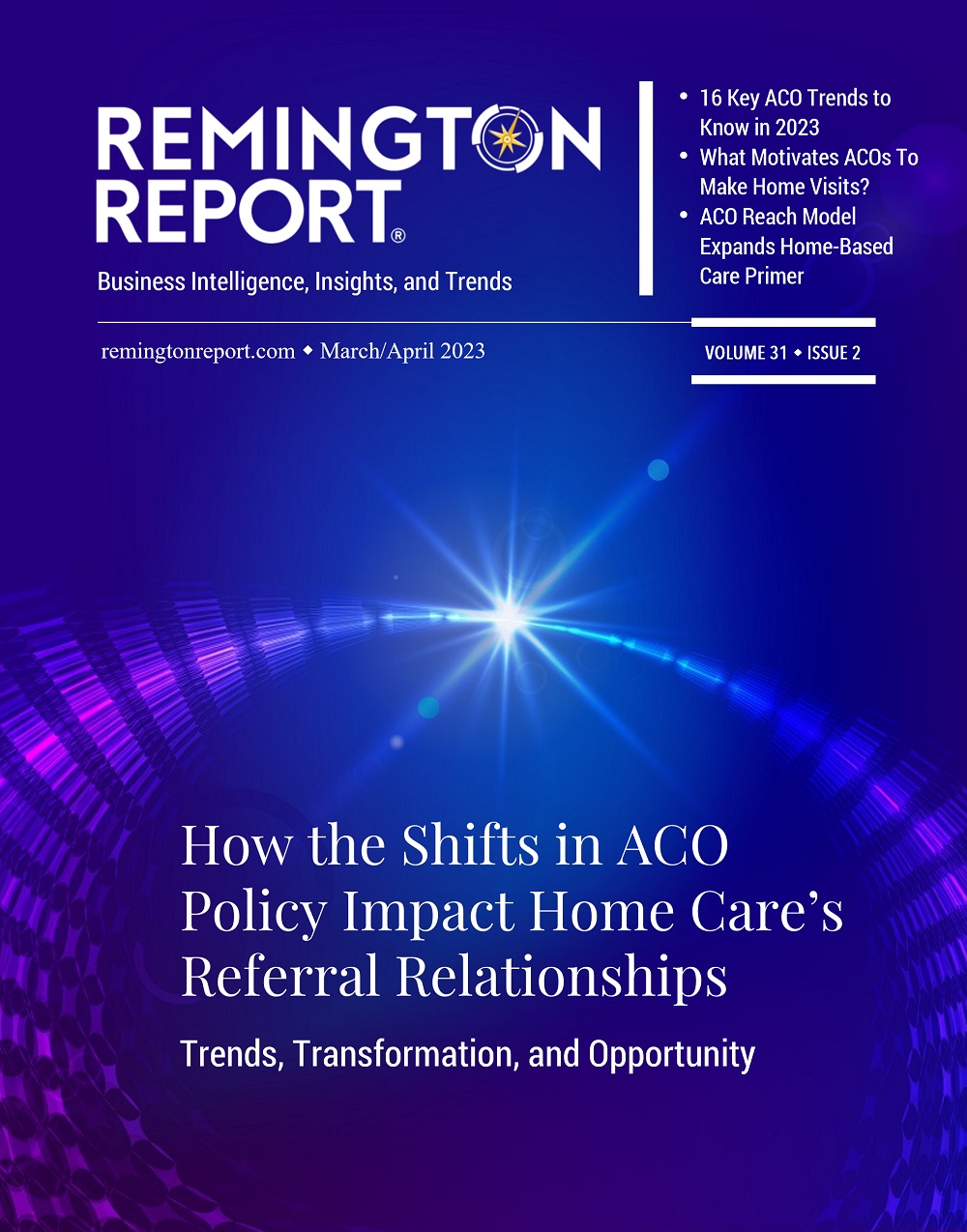
Click on any title to read the article.
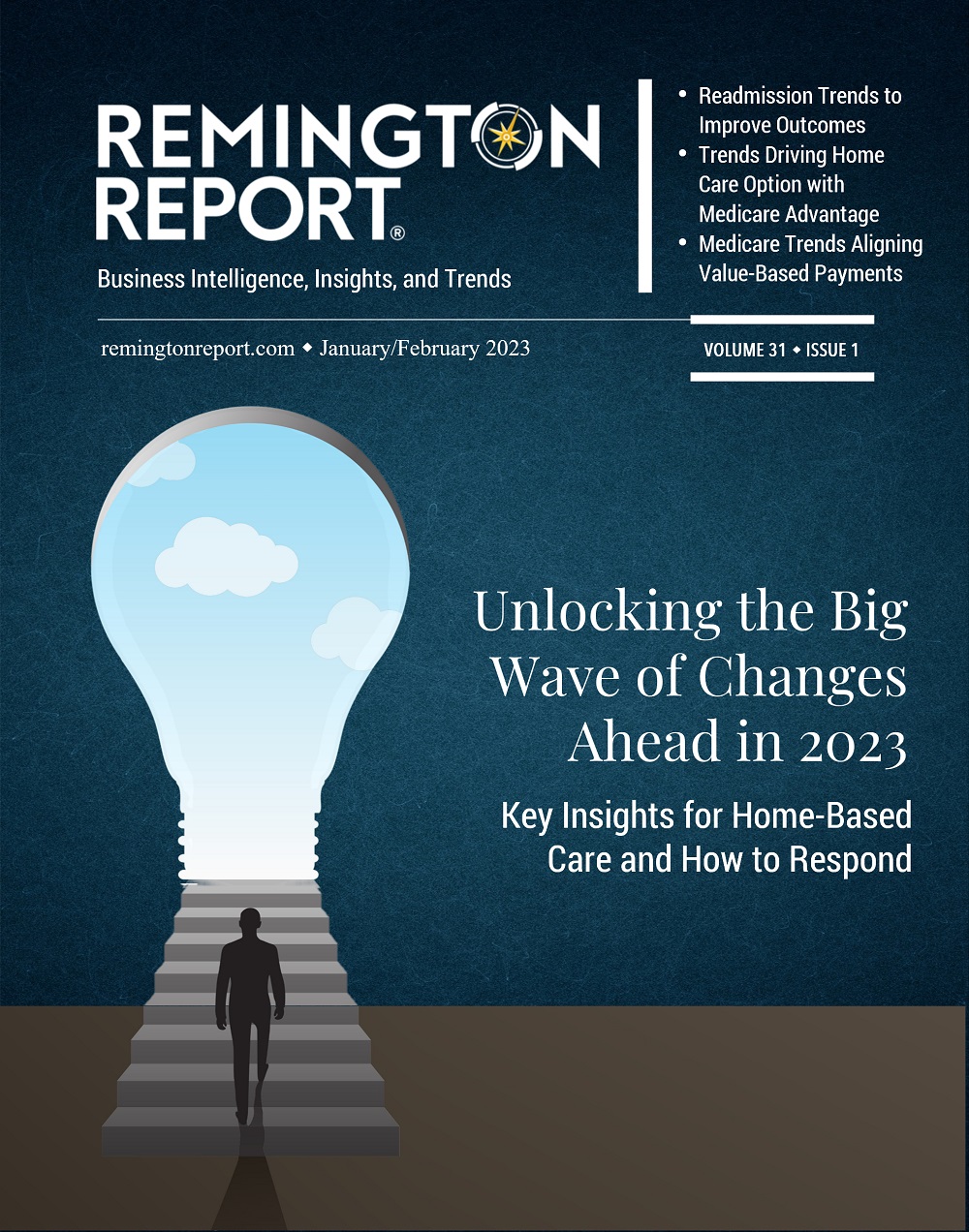
Click on any title to read the article.
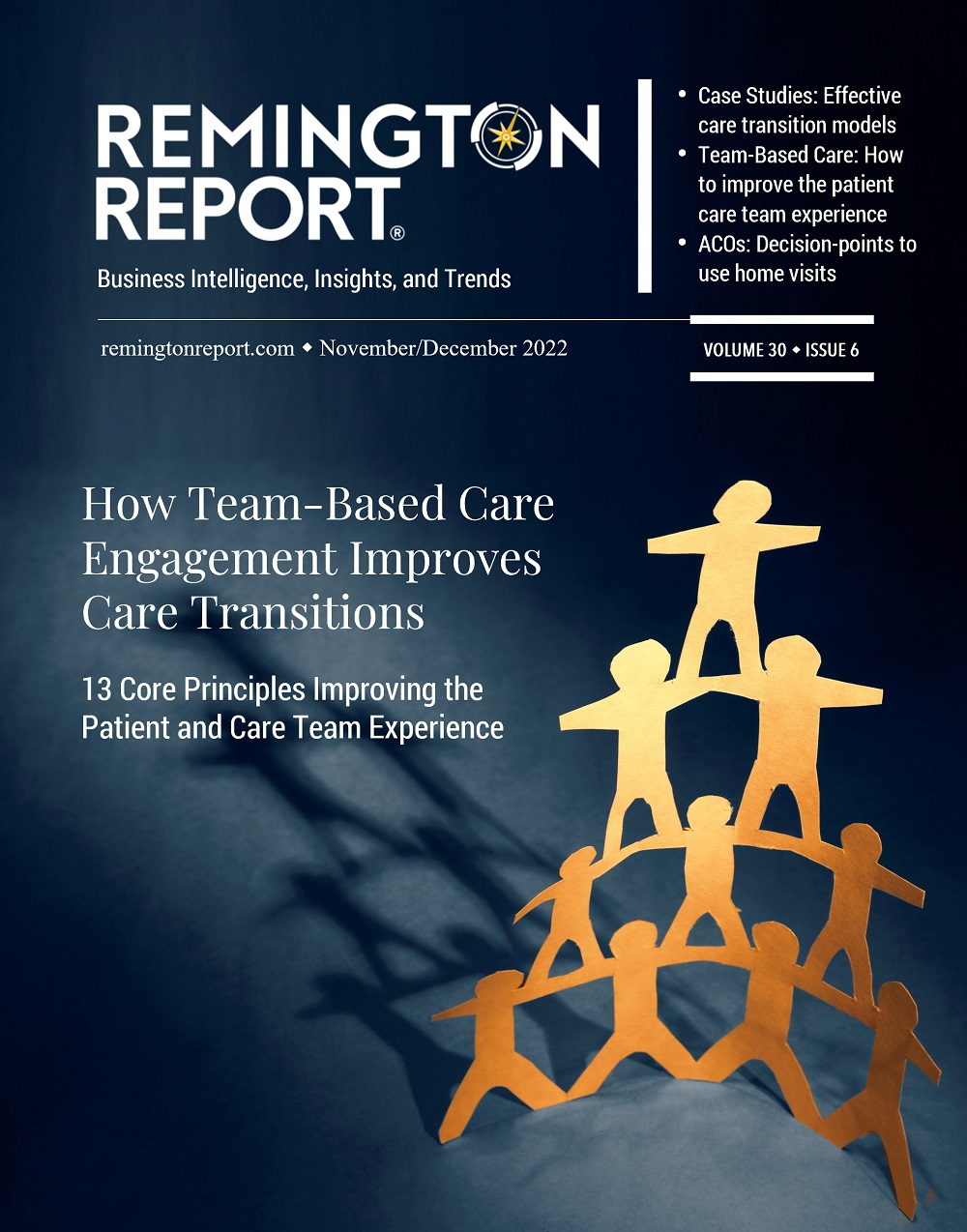
Click on any title to read the article.
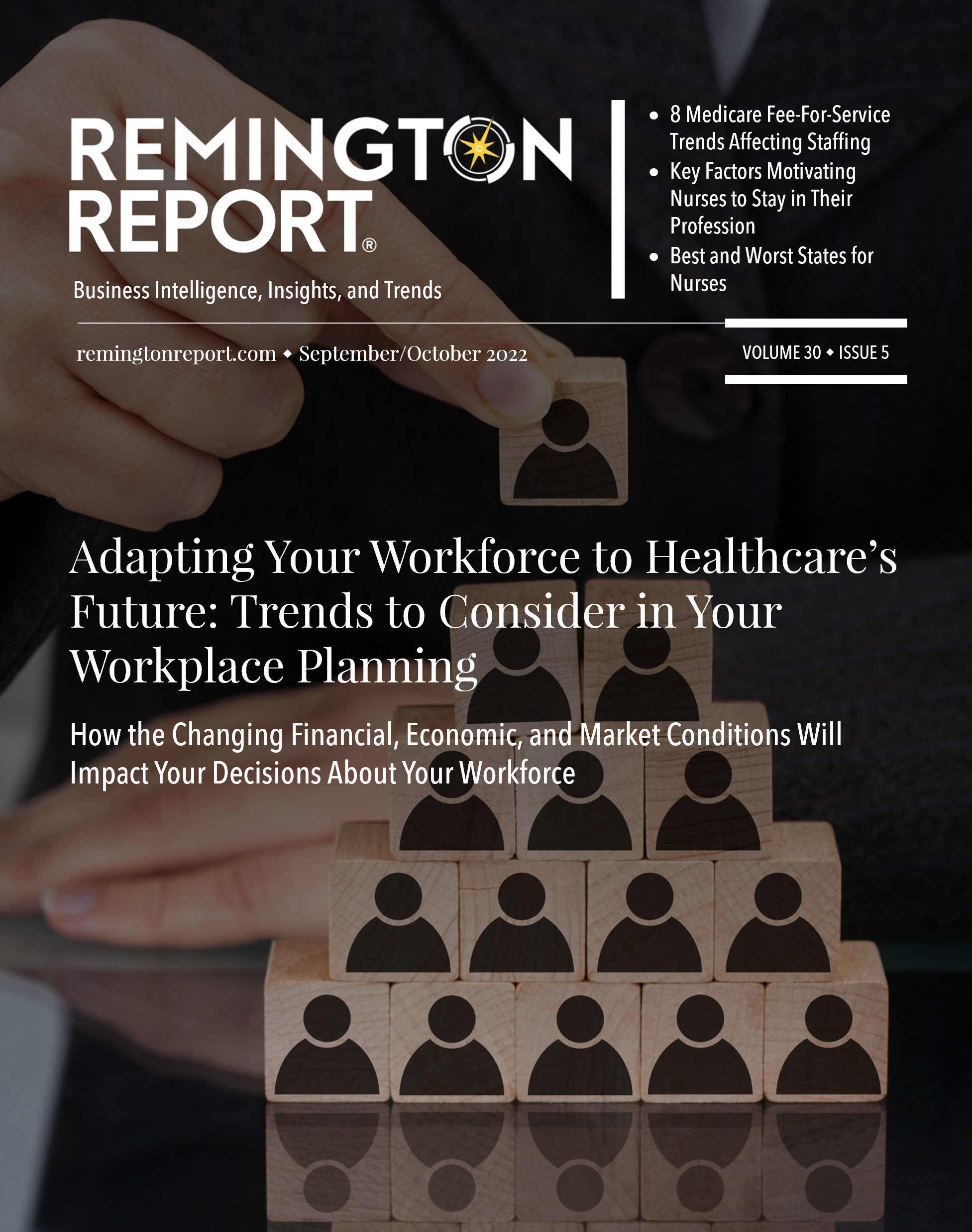
Click on any title to read the article.
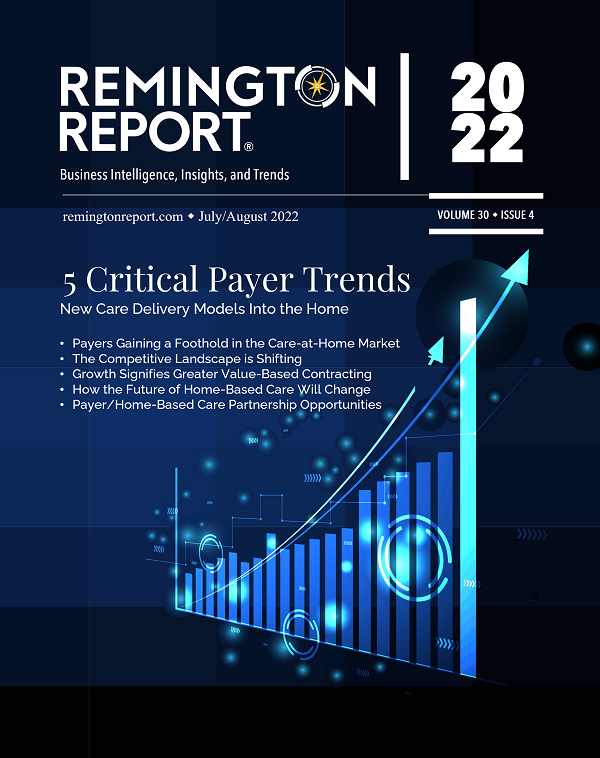
Click on any title to read the article.
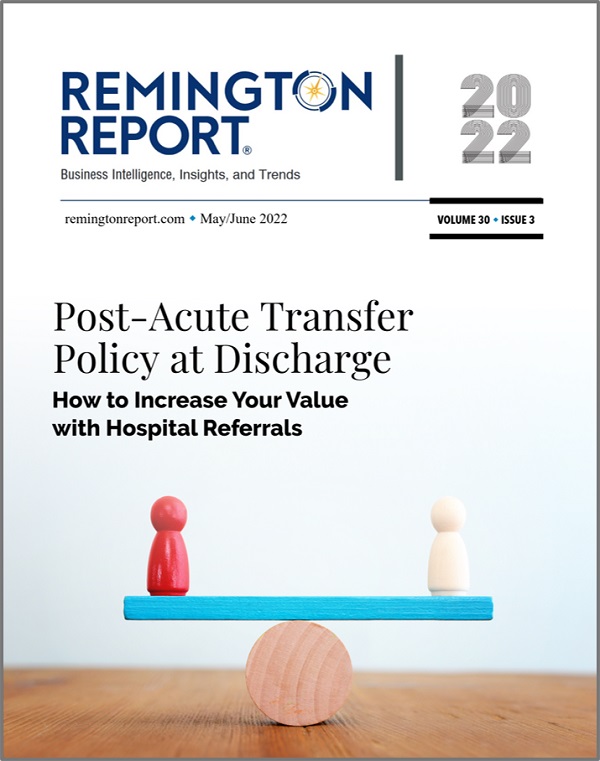
Click on any title to read the article.
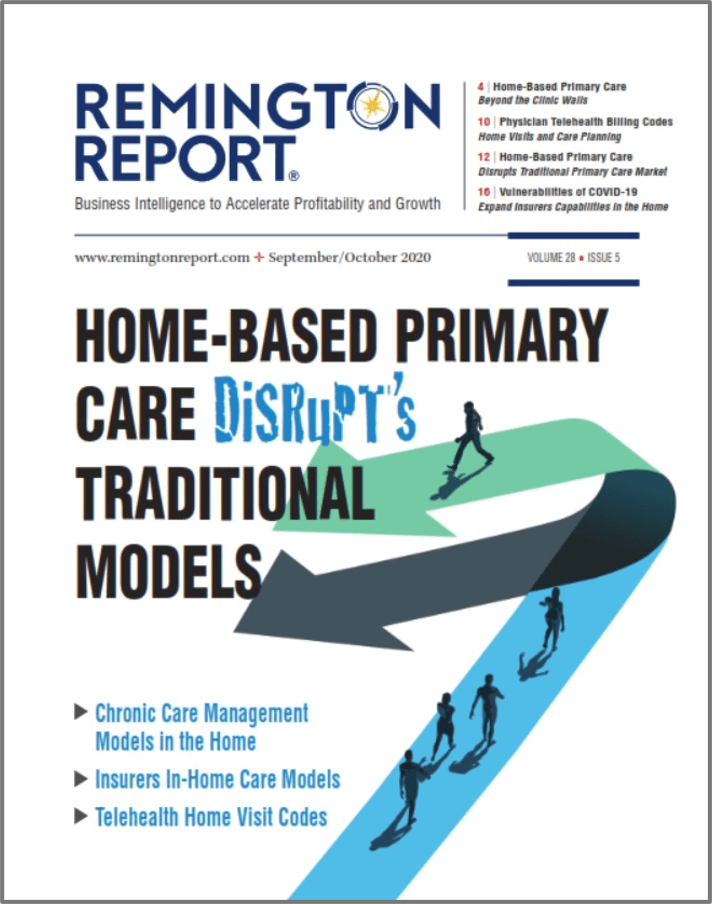
If you are not receiving our newsletters, then the first thing to do is to check your spam folder. If you can see our newsletters there, then you should whitelist them/report them as not spam. The process for doing so is typically documented by your email product. You can also add us to your contact list (remington@remingtonreport.com).
If you can’t see our newsletters anywhere in your spam folder, then most likely they were filtered out by your organization’s firewall. In this case, you should ask the security team of your IT department to whitelist incoming mail originating from the following IPs:
| CIDR | Start of Range | End of Range |
|---|---|---|
| 173.236.20.0/24 | 173.236.20.2 | 173.236.20.254 |
| 192.92.97.0/24 | 192.92.97.2 | 192.92.97.254 |
| 52.128.40.0/21 | 52.128.40.0 | 52.128.47.255 |
You should also ask them to whitelist the domain: remingtonreport.com
Forgot your password? Just click the "Forgot Password?" link below and enter the subscriber's username or email address. An email will be sent to you with a password reset link. Be sure to check your spam and/or junk mail folders for the email.